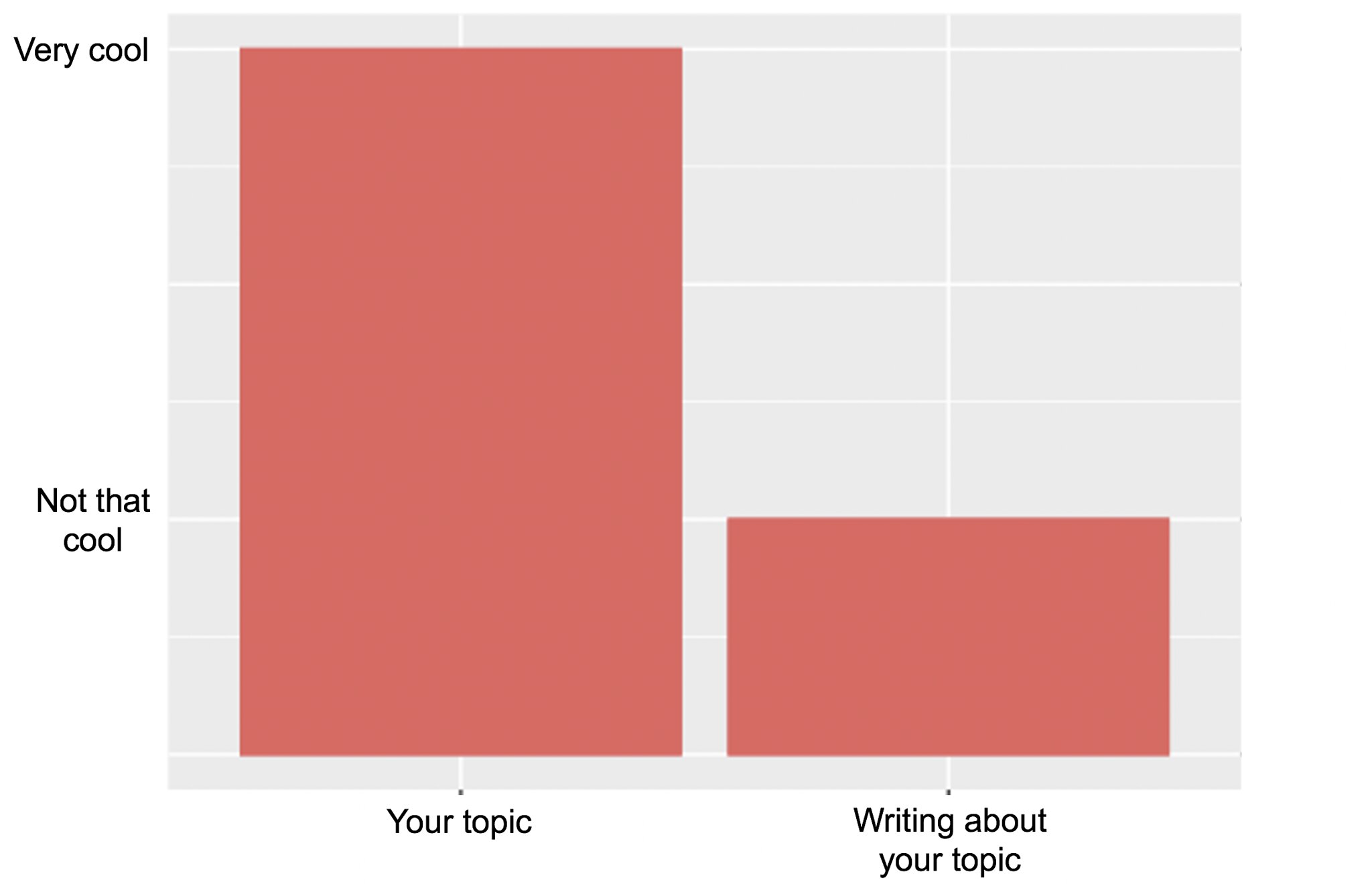“Alex Winsor” GRAD SCHOOL DIARIES
writing reading publishing development
Storytelling in Science
While contemplating the natural world, I am inundated with vivid imagery of elegant landscapes and the peculiar creatures that inhabit them. However, when my thoughts drift to evolution and deep time, I long to witness a world that no longer exists. Naïvely, I fail to consider the snapshot I am viewing is from a scene in flux, and the changes I desperately want to uncover are too small to see (alas, I’m not a genomicist). How might I mitigate these problems? The answer, which should be obvious—with a time machine—leaves me with a decision of how far back to go. Perhaps I will marvel at a sky adorned with streaks of red during sunset near a bonded tribe of early hominids, or peer out into the vastness of a Cambrian sea, where my ancestors struggle for existence underneath the surface.
The allure of science has been, and always will be, intertwined with narrative. Everything published in science seeks to tell a story. This story may be of physical forces that cause phospholipids to assemble spontaneously into membranes; the molecular pathways that yield defensive toxins in a plant; how the struggle to reproduce led to profuse structures emanating from the skulls of deer; or why the onset of the industrial age and burning of fossil fuels led to worldwide climatic change. All of these descriptive threads are woven into nature’s tapestry, seemingly by the arthritic hands of a blind needleworker. Scientific research unravels these threads (the “Introduction”) with increasingly sophisticated machinery (the “Methods”), gleans new insights from critically analyzing each strand (the “Results”), and intercalates itself into the existing narrative, or forges a novel alternative (the “Discussion”). We are “standing on the shoulders of giants” because given enough time, modest contributions from researchers worldwide amass into more inclusive, complete narratives.
Boring writing does great disservice to the beauty of these narratives. Boring writing erects immediate barriers to a publication’s content. To my audience: how often do you trudge through papers that are incredibly dull? (Hopefully not this blog article!) Scientific writing is often laden with jargon and monotonous sentence structure, while suppressing flowery language and humor (Fig. 1). Much of this is inevitable. I am not arguing against concise writing, the need of technical terms to convey specific ideas, or the meticulous documentation of experimental protocols. But when I cannot discern the voice of an author, or at least a combination of voices, I find myself wondering if I am reading the prose of humans or artificial intelligence.
Fig. 1 Scientific depiction of coolness levels associated with your topic itself and the act of writing about it. Rigorous analysis indicated a significant difference (P<0.001). Bar graph was created using a popular statistical software.
After ruminating on these thoughts, I stumbled across a paper that articulated the problem wondrously. The author, Professor Kaj Sand-Jensen, argues that enthusiasm for scientific research is often lost in the “predictable, stilted structure and language” of publications [1]. In this paper, Sand-Jensen outlines (perhaps uncoincidentally) ten ways to write consistently boring publications, which seem to be strictly adhered to by many scientists. Reflecting on this paper and my own writing, I am guilty of almost everything on the list. Perhaps this derives from a lack of skill or ingenuity, but I vow to do better—even if incrementally. It seems much easier to wax lyrical when discussing natural history, an oft-neglected topic in the contemporary life sciences. I am delighted (and read more intently) when I come across humorous language or poetic descriptions in an otherwise dense paper or book. Authors of primary literature can benefit from the adroitness of their colleagues that specialize in scientific communication or creative writing.
Naturally, content also matters. Readers anticipate a narrative arc, of which our data is merely a torn shred of a larger picture. Don’t believe me? Reflect on your discussions about how to “frame” a paper with coauthors. Now suppose Homer or Shakespeare had access to your species abundance data. I’d wager the resulting paper would be an immediate contender in Science or Nature (another convenient use of the time machine, sans the butterfly effect). Storytelling is critical to human culture [2], and some researchers even suggest it drove the evolution of our minds [3]. The medium has evolved from verbal discourse to for-profit scientific publishing, but the underlying concept remains.
If you made it this far, I appreciate you for taking the time to consider the musings of a graduate student. I hope we can all strive to appreciate artistic writing and better storytelling in science.
References
[1] Sand-Jensen, K. (2007) How to write consistently boring scientific literature. Oikos, 116: 723-727. https://doi.org/10.1111/j.0030-1299.2007.15674.x
[2] Davies, S. R., Halpern, M., Horst, M., A. Kirby, D. A. & Lewenstein, B. (2019) Science stories as culture: experience, identity, narrative and emotion in public communication of science. JCOM 18 (05), A01. https://doi.org/10.22323/2.18050201
[3] Coen, E. (2019) The storytelling arms race: origin of human intelligence and the scientific mind. Heredity 123: 67–78. https://doi.org/10.1038/s41437-019-0214-2

